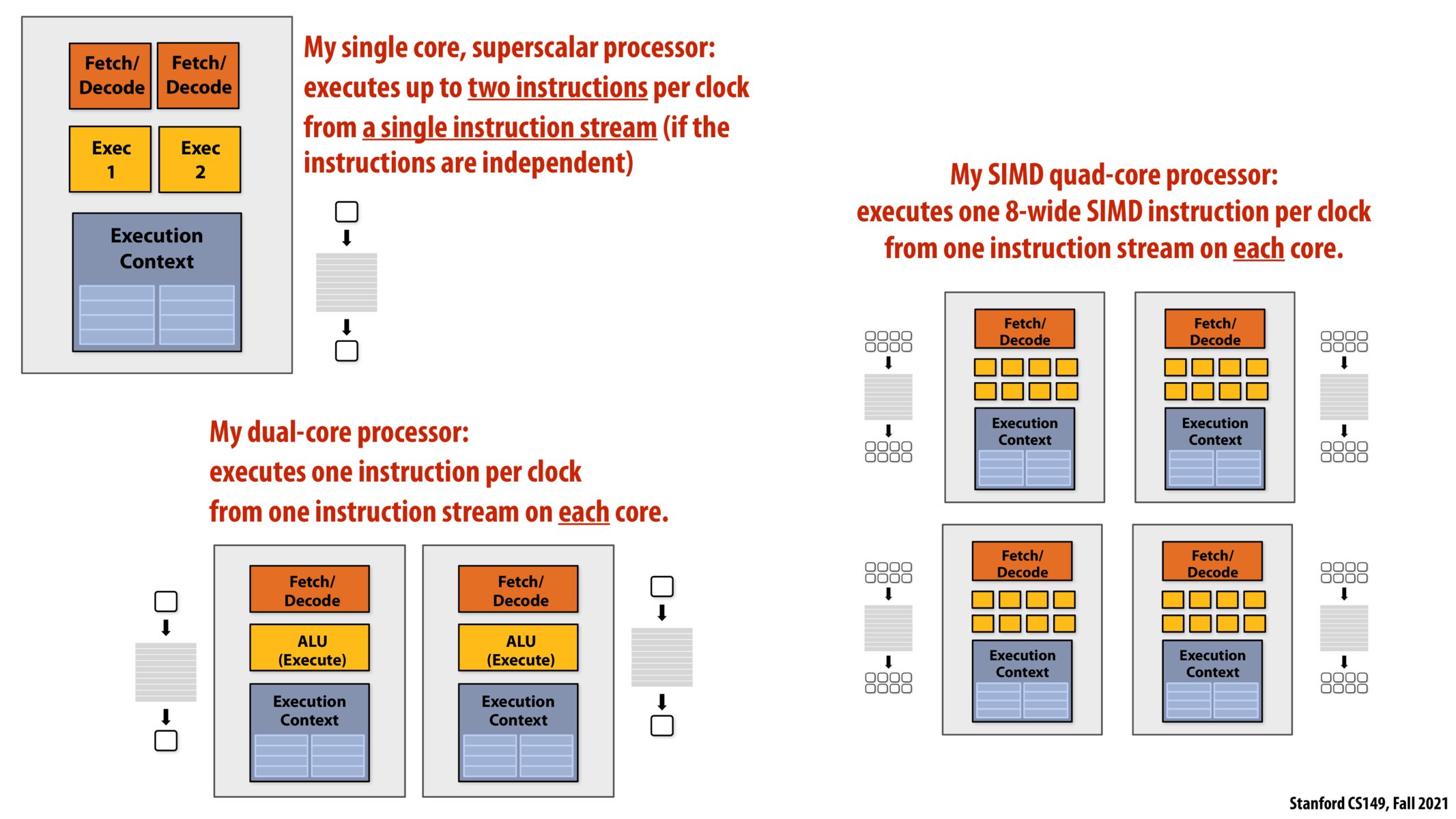

@superscalar -- The single-core superscalar processor (top left) only achieves parallel execution if there is sufficient ILP in the thread it is trying to run. In contrast, assuming it is provided two threads to run, the dual core processor (bottom-center) is always able to run two instructions at a time, one instruction on each core. Because instructions in different threads of control are independent.

I find this slides give a very good summary of the different types of parallelism in modern proecessors. (1) a single core superscalar processor achieves parallel execution by inferring ILP and runs in instructions in parallel. (2) a dual-core processor that is able to run two threads in parallel, one thread on each core, specified by software. (3) a SIMD processor that is able to run 8-wide SIMD instructions in one core.
Please log in to leave a comment.
If you have plenty of memory for multiple execution contexts, is a dual-core processor in general faster than a single-core superscalar processor with two fetch&Exec units?